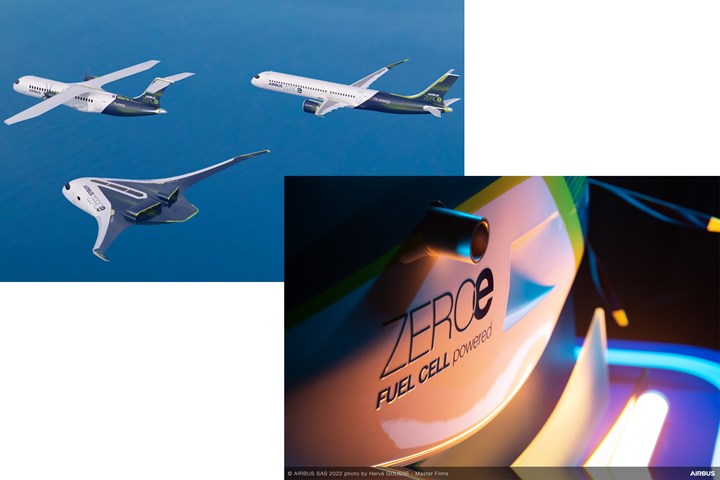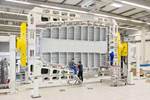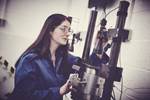Airbus opens ZEDC in Stade for H2 systems using composites
Zero-emission development center in Germany will target cryogenic liquid hydrogen tanks using lightweight carbon fiber-reinforced composites for proposed aircraft to enter service by 2035.

ZEROe concept aircraft and fuel cell engine. Photo Credit: Airbus
As reported in Aviation Week and airliners.de, Airbus is opening a new ZEROe development center (ZEDC) in Stade, Germany to develop hydrogen technologies. ZEROe programs target future zero-emission aircraft by Airbus that will use liquid hydrogen (LH2) instead of conventional fuel, proposed to enter into service by 2035. The ZEDC in Stade will focus on cost-effective lightweight hydrogen systems using fiber-reinforced composite materials, such as cryogenic LH2 tanks.
“This ZEDC will benefit from the broader ecosystem of composite materials research and development such as the Airbus subsidiary Composite Technology Center and the CFK NORD research center in Stade, as well as further synergies from space and maritime activities,” Airbus CTO Sabine Klauke says. Stade is also the site for production of Airbus’ composites-intensive vertical tail planes (VTP).
The team in Stade will cooperate with ZEDC working on metal tanks, especially those in Bremen, Germany, and Nantes, France. The work will include part design and manufacturing, as well as testing assembly methods. It will also contribute to the work at other ZEDC including in Madrid, Spain, and Filton, U.K.
Aviation Week notes that under the STOHYC (Stockage d’Hydrogène Cryogénique) demonstration program, the technology readiness level (TRL) for a metal LH2 tank was brought to TRL 4, while usually TRL 6 is required before launch of a product development. One of the STOHYC program’s partners, Aresia, is a specialist in conventional metal tanks and sees lighter weight composites as an option for the longer term. This view has also been expressed by hydrogen aircraft propulsion pioneer ZeroAvia. Airbus has in fact invested in ZeroAvia and agreed to collaborate on certification approaches for H2 power systems. The companies announced they would work on a number of critical technical areas, including H2 fuel storage, flight and ground testing of fuel cell propulsion systems, and development of H2 refueling infrastructure and operations.
Airliners.de adds that the ZEDC in Stade is supported by the German state of Lower Saxony and also through German funded projects like the LuFo aviation research program. It will also be linked to the government’s planned hydrogen innovation and technology center in northern Germany.
Related Content
-
A new era for ceramic matrix composites
CMC is expanding, with new fiber production in Europe, faster processes and higher temperature materials enabling applications for industry, hypersonics and New Space.
-
Combining multifunctional thermoplastic composites, additive manufacturing for next-gen airframe structures
The DOMMINIO project combines AFP with 3D printed gyroid cores, embedded SHM sensors and smart materials for induction-driven disassembly of parts at end of life.
-
Plant tour: Albany Engineered Composites, Rochester, N.H., U.S.
Efficient, high-quality, well-controlled composites manufacturing at volume is the mantra for this 3D weaving specialist.
















